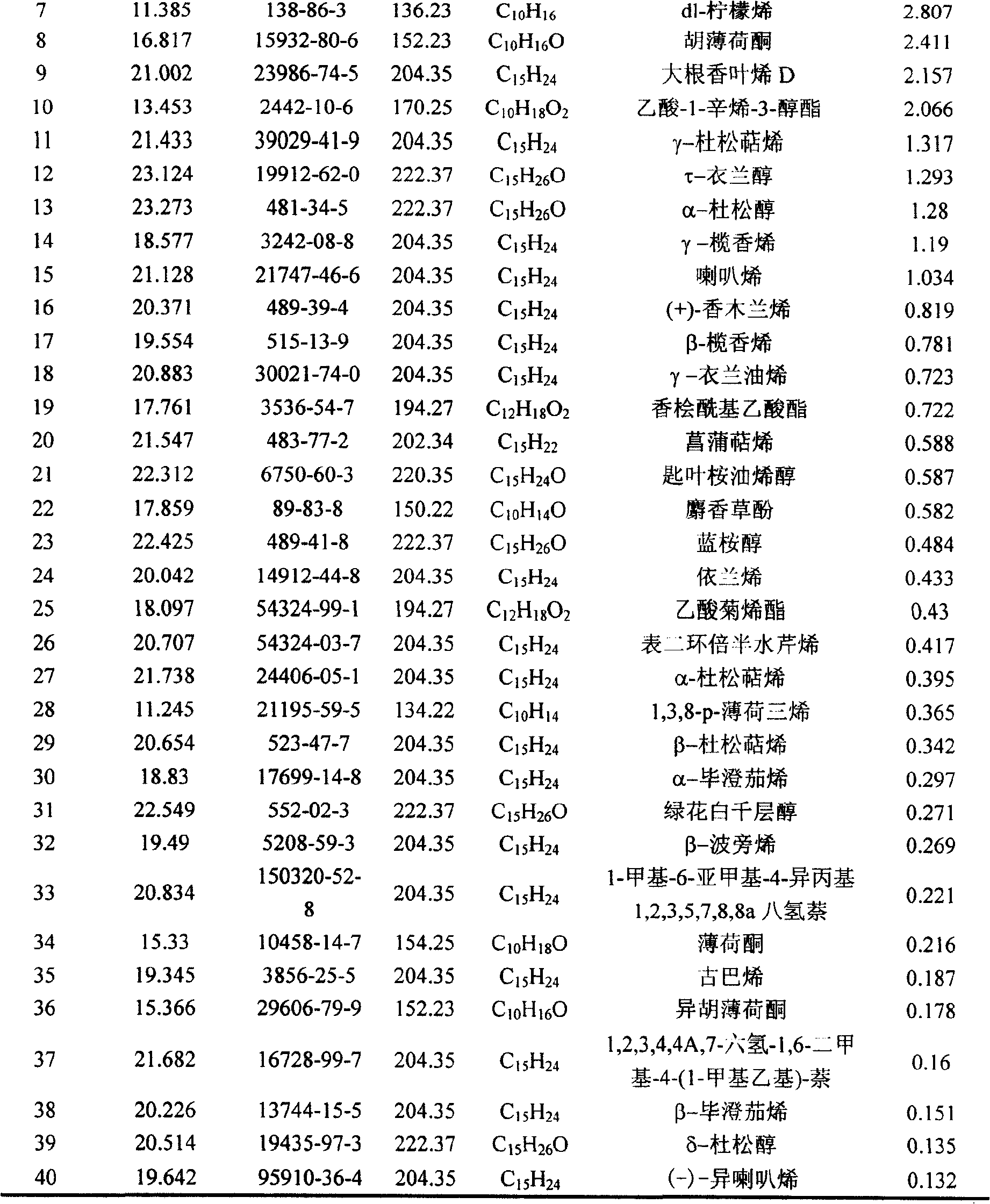Technique for preparing health care drink series using fresh Agastache leaf as raw material
A preparation process and a technology of Agaricus leaves are applied in the field of processing and utilization of natural health-care food resources, and can solve problems such as loss of effective components and the like
- Summary
- Abstract
- Description
- Claims
- Application Information
AI Technical Summary
Problems solved by technology
Method used
Image
Examples
example 1
[0013] Take 50g of fresh patchouli leaves, put them into a 1000ml round bottom flask after rinsing, add 425ml of deionized water, then connect the distillation device, heat and distill, condense with tap water at 20°C, collect the distillate, and distill until the distillate reaches 100ml termination. The liquid in the round bottom flask was then decanted and kept separately. Then add deionized water into the round bottom flask, repeat the above operation twice, and obtain 300ml of distillate and 900ml of decoction. Store the distillate in a refrigerator at 4°C. Take 75% of the decoction and concentrate it on a rotary evaporator to one-third of its original volume, then combine it with the decoction that has not been concentrated, and add 0.1% of the decoction after cooling to room temperature Composite enzyme preparation No. 1 (neutral protease: papain: pectinase = 1:1:1), and then placed in a 4°C refrigerator for overnight. The next day, after adding 0.5% diatomaceous eart...
example 2
[0015] Take 20kg of fresh patchouli leaves, rinse and put them together with 500g of dry stevia leaves into a 1000L still, add 800L of pure water, heat and distill, condense with water at 4°C, collect the distillate, and distill until the distillate reaches 100kg termination. The contents of the still are then drained, the residue is filtered off, and the liquid is collected as a decoction. Take 50% of the distillate and store it at 4°C, and put the other 50% in a fractionating still for fractionation, collect the first 20% of the fraction as essential oil, store it at 4°C, and discard the distillate. Get 90% of the decoction and put it on the evaporation concentration device to concentrate to one-tenth of the original volume, then combine with the decoction that has not been concentrated, add 0.5% compound enzyme preparation No. 2 after cooling to room temperature (pancreatin: papain: pectinase = 1:1:1), let stand at 4°C for 12h, then add 2% diatomaceous earth filter aid and...
example 3
[0017] The composition of a sample of water distillate of fresh Ageratum leaves was determined, and the results are shown in Table 1. The results showed that the volatile components of the water distillation product of fresh Ageratum leaves were mainly cis-isomenthone and trans-isomenthone, whose contents were 34.11% and 15.42%, respectively. The rest are 40 ingredients such as piperonone, hexenal, δ-juniperne terpene, juniper alcohol, α-ylangene, limonene, pulegone, etc. Among them, piperonone has an antiasthmatic effect and is allergic to guinea pigs Shock has a protective effect, and with the increase of dose, there is a quantitative-effect relationship, which can be used for the treatment of asthma. Pulegone has antihistamine effect, hexenal has effective antibacterial activity, D-limonene has antitumor effect, antibacterial activity, expectorant, cough relieving effect, and gallstone dissolution effect, indicating that the beverage processed by this process has relatively...
PUM
 Login to View More
Login to View More Abstract
Description
Claims
Application Information
 Login to View More
Login to View More - R&D
- Intellectual Property
- Life Sciences
- Materials
- Tech Scout
- Unparalleled Data Quality
- Higher Quality Content
- 60% Fewer Hallucinations
Browse by: Latest US Patents, China's latest patents, Technical Efficacy Thesaurus, Application Domain, Technology Topic, Popular Technical Reports.
© 2025 PatSnap. All rights reserved.Legal|Privacy policy|Modern Slavery Act Transparency Statement|Sitemap|About US| Contact US: help@patsnap.com



